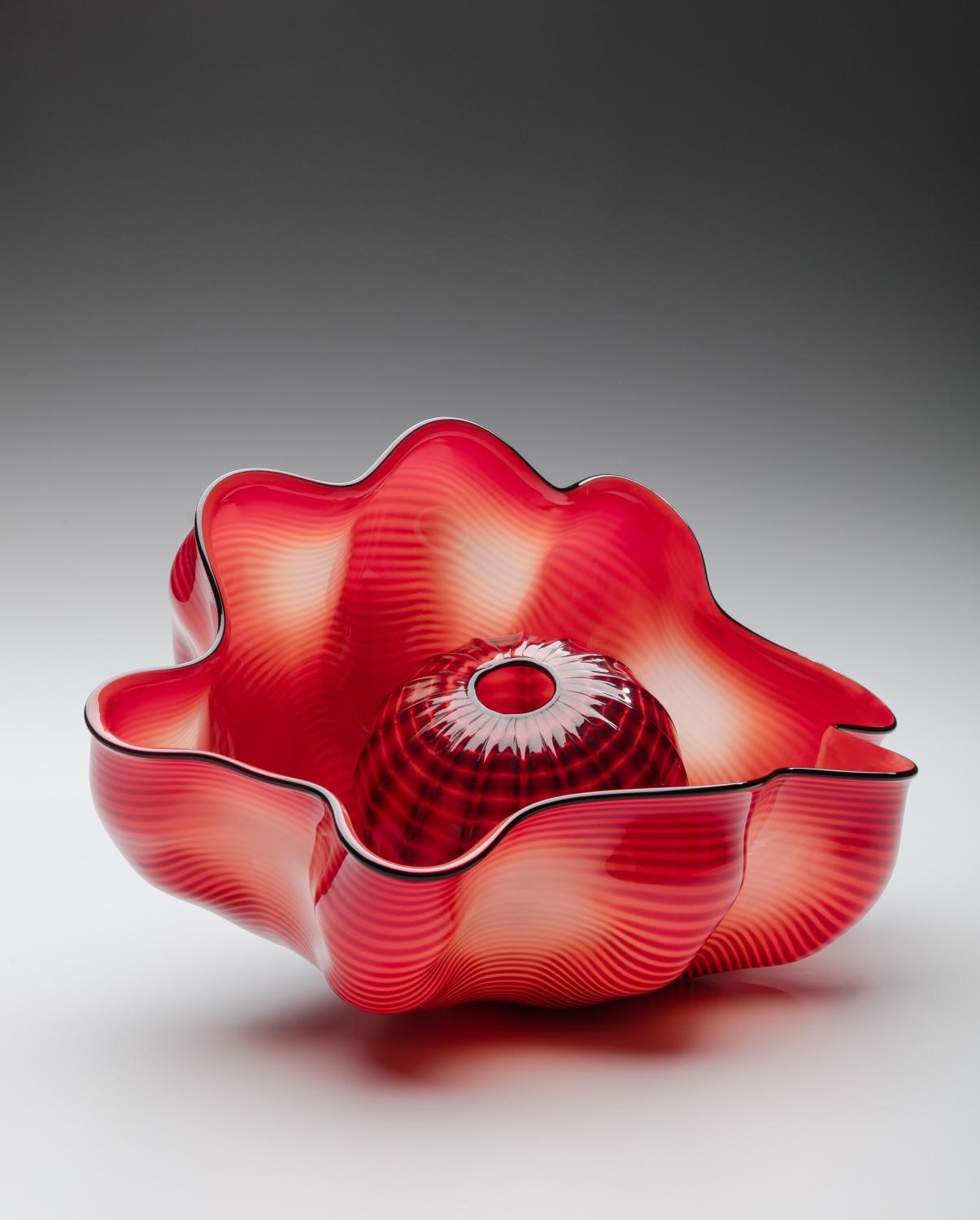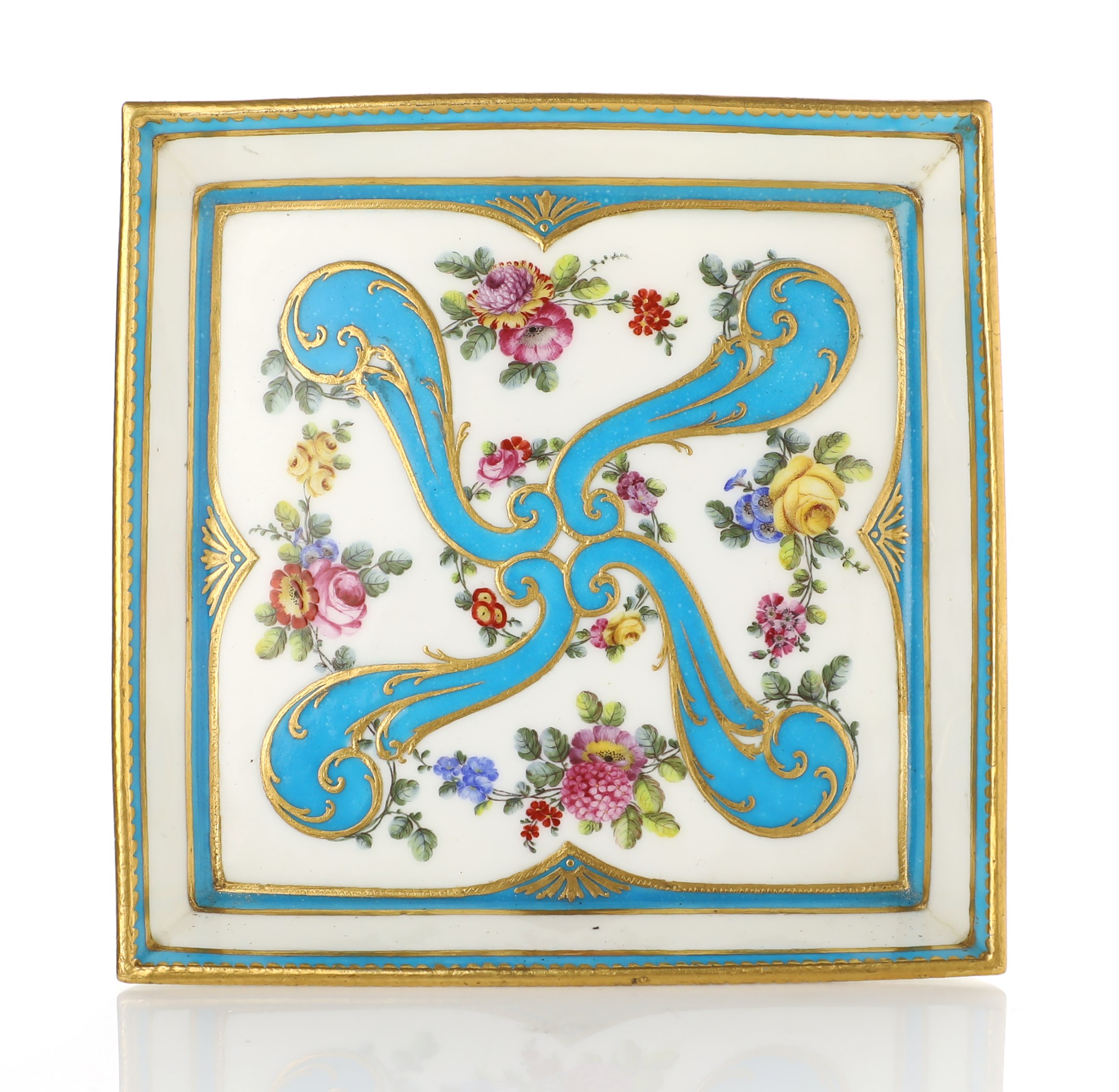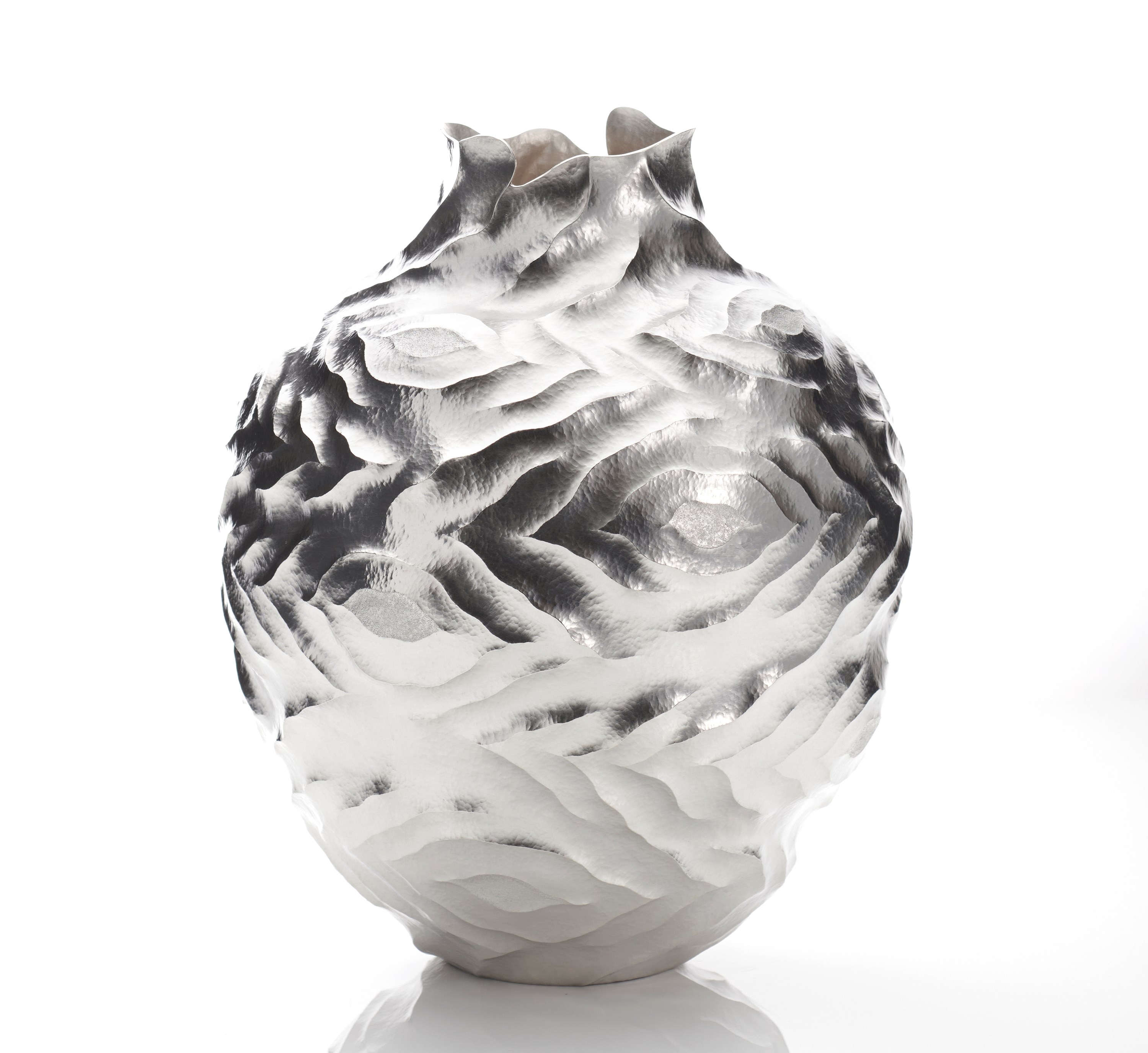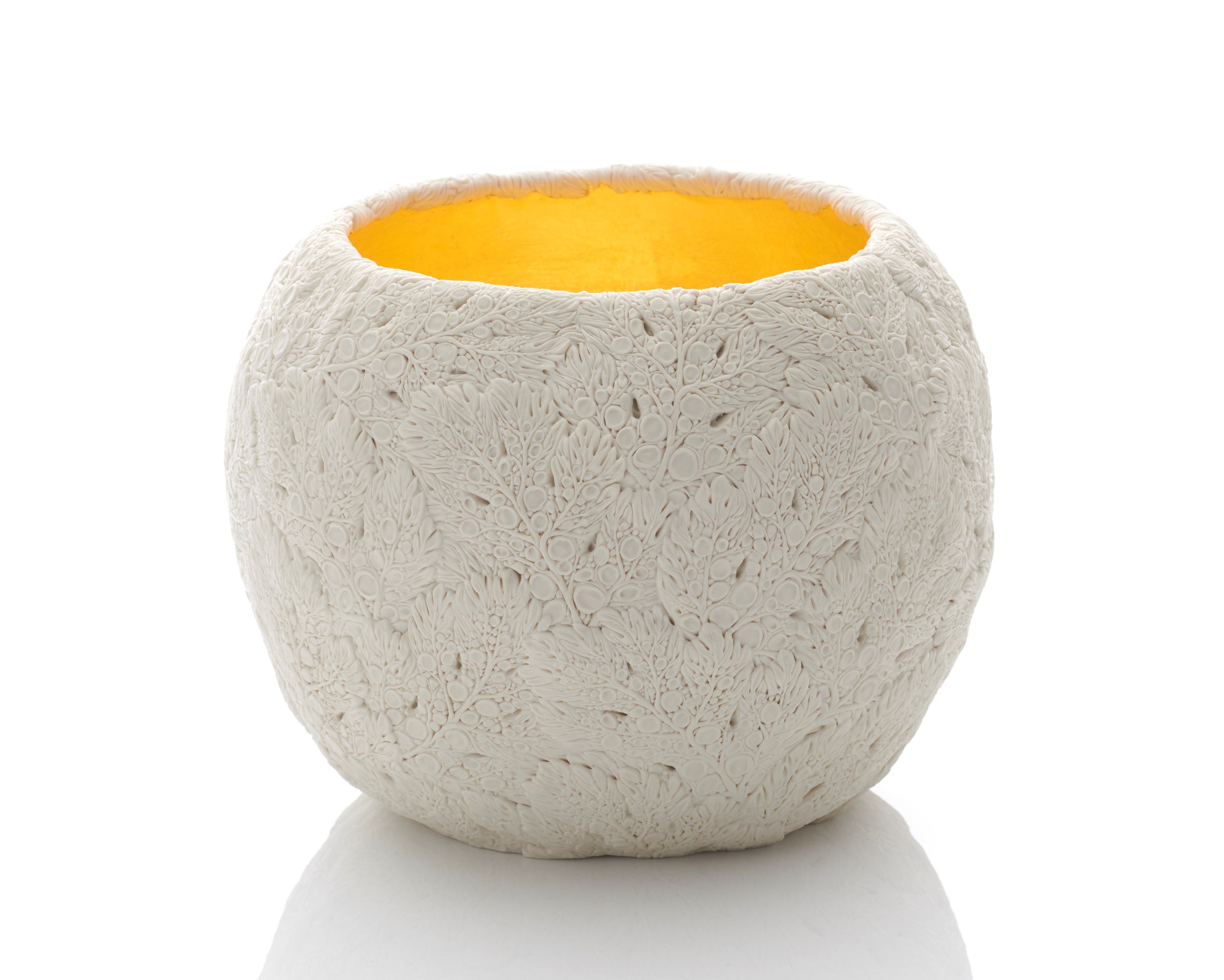18th Century Redivivus
28 September 2023
Share
How the arcane and fragile porcelain continues to withstand the test of time.
by Emma Chrichton-Miller
Two stands at The Treasure House Fair openly share their double passion: for eighteenth-century porcelain and for contemporary decorative art of the highest level.
The two galleries are known to each other: Adrian Sassoon and Michele Beiny have been friends for longer than they have been dealers. Beiny, based in New York, started her own gallery in 1987 specialising in 18th and early 19th century English and Continental porcelain and European faience, as well as French furniture and decorations, objets de vertu, and renaissance jewels.
More recently, she has broadened her focus to include a handful of contemporary American studio glass and studio ceramics artists - including the renowned Dale Chihuly and Jennifer McCurdy.

Gilded Radiatori Vessel by Jennifer McCurdy
2018, Courtesy of Michele Beiny
 Chinese Red Seaform by Dale Chihuly
Chinese Red Seaform by Dale Chihuly
1995, Courtesy of Michele Beiny
Sassoon, meanwhile, early on made French Sèvres his specialism - unrivalled in its decorative exuberance and technical virtuosity - but since the mid 1990’s he has established a significant parallel interest in the work of contemporary specialists in ceramics, glass, gold, silver, paper, wood, lacquer, bamboo and hard stones.
What becomes evident in the displays of both galleries at fairs is the continuity of spirit between the work from these two eras, separated by four hundred years.
Beiny puts her finger on it. “I am not interested in contemporary art that just uses porcelain or glass as a medium. I want to see work by people fascinated by the material, its history and its techniques, seeing where they can push the limits of the material, innovating both at the level of design and craftsmanship.” She adds, “That’s what they were doing in the eighteenth century - working with porcelain, this great new discovery.”
Today she defines her particular passion as the early years of English and Continental porcelain manufacture - when across the continent princes and monarchs strove to outdo each other in the splendour of the porcelain artefacts emerging from their manufactories. Currently, for instance, she has available a Meissen Böttger porcelain teapot from 1715, named for the alchemist, Johann Friedrich Böttger (1682-1719), credited with discovering the formula for ‘true’ or hard-paste porcelain in 1708. This led in 1710 to the foundation of the Meissen porcelain manufactory by Augustus II, King of Poland. Another item on her website is a Vienna Du Paquier trembleuse cup and saucer from around 1725-30 - just a few years into the earliest phase of production for this Viennese manufactory, founded by the Dutch entrepreneur Claude Innocentius du Paquier in 1719. She has a strong interest also in English soft-paste porcelain and faience; tin-glazed and enamelled earthenware, which first emerged in France during the sixteenth century, and spread widely across Europe.
 Vienna du Paquier trembleuse cup and saucer
Vienna du Paquier trembleuse cup and saucer
1725-30, Courtesy of Michele Beiny
Faience was highly valued among elite patrons during the seventeenth and early eighteenth centuries, before soft-paste porcelain factories came into being but continued to be used throughout the eighteenth century, with inventive fruit, vegetable and animal shaped vessels demonstrating the ebullient creative imaginations of the makers. Beiny comments, “As soon as it becomes repetitive, I am not interested.” In her view, only Sèvres maintained its high standards of experimentation - “new shapes, new glazes” - into the nineteenth century: “They were haemorrhaging money making porcelain in ever new and innovative ways.”
It is this spirit of excitement that Beiny finds in the American modern and contemporary makers whose work she showcases. She says, “It is seamless, the continuity between Jennifer McCurdy and eighteenth century porcelain.” She is also a significant collector of the work of English potter Kate Malone, represented by Adrian Sassoon. Malone is renowned not just for her expressive, generous forms inspired directly by nature but also by the depth and intensity of her commitment to the science of glazing, of which she has become a master.
Encouraged by Sassoon, she has consistently sought to extend her own technical abilities and learn from the past. Beiny notes; “Kate looks at eighteenth-century faience to inspire her.” If this seems an obvious inspiration, Kate has looked also at eighteenth-century porcelain, which at first she found a bit cold. “But then you get to Sèvres and there is no way Sèvres is frigid - all those flowing lines, those Missoni zigzags and those checks and those corally patterns, as if they are out of the funkiest magazine from Italian Vogue. You look at those elephant vases or the tureens,” she says, “and the form, the glaze and the decoration are all one fantastic knot intertwined, with relevance to each other. I think that’s amazing.”

A Soft-Paste Sèvres Porcelain Tray
1762, Courtesy of Adrian Sassoon
All of Adrian Sassoon’s contemporary artists are similarly marked out by their technical brilliance and commitment to pushing the boundaries of their material, whether the master silversmith Hiroshi Suzuki, the British glass artist Colin Reid, the British-based Japanese blacksmith Junko Mori or her compatriot Hitomi Hosono.
 Miyabi-Fire Vase by Hiroshi Suzuki
Miyabi-Fire Vase by Hiroshi Suzuki
2023, Courtesy of Adrian Sassoon
Hitomi Hosono’s detailed porcelain vessels, inspired by the natural world and botanical specimens, with their chalk-like finish and gold embellishments, are feats of astonishing technical virtuosity. As the gallery’s website proclaims, “An authority on Sèvres and Vincennes porcelain, Adrian’s specialism has given him an appetite for exquisite design and detail.” It seems they are as abundant today as they were in 1740.
 A Hawthorn Bowl by Hitomi Hosono
A Hawthorn Bowl by Hitomi Hosono
2020, Courtesy of Adrian Sassoon
by Emma Chrichton-Miller
Two stands at The Treasure House Fair openly share their double passion: for eighteenth-century porcelain and for contemporary decorative art of the highest level.
The two galleries are known to each other: Adrian Sassoon and Michele Beiny have been friends for longer than they have been dealers. Beiny, based in New York, started her own gallery in 1987 specialising in 18th and early 19th century English and Continental porcelain and European faience, as well as French furniture and decorations, objets de vertu, and renaissance jewels.
More recently, she has broadened her focus to include a handful of contemporary American studio glass and studio ceramics artists - including the renowned Dale Chihuly and Jennifer McCurdy.

Gilded Radiatori Vessel by Jennifer McCurdy
2018, Courtesy of Michele Beiny
 Chinese Red Seaform by Dale Chihuly
Chinese Red Seaform by Dale Chihuly1995, Courtesy of Michele Beiny
Sassoon, meanwhile, early on made French Sèvres his specialism - unrivalled in its decorative exuberance and technical virtuosity - but since the mid 1990’s he has established a significant parallel interest in the work of contemporary specialists in ceramics, glass, gold, silver, paper, wood, lacquer, bamboo and hard stones.
What becomes evident in the displays of both galleries at fairs is the continuity of spirit between the work from these two eras, separated by four hundred years.
Beiny puts her finger on it. “I am not interested in contemporary art that just uses porcelain or glass as a medium. I want to see work by people fascinated by the material, its history and its techniques, seeing where they can push the limits of the material, innovating both at the level of design and craftsmanship.” She adds, “That’s what they were doing in the eighteenth century - working with porcelain, this great new discovery.”
Today she defines her particular passion as the early years of English and Continental porcelain manufacture - when across the continent princes and monarchs strove to outdo each other in the splendour of the porcelain artefacts emerging from their manufactories. Currently, for instance, she has available a Meissen Böttger porcelain teapot from 1715, named for the alchemist, Johann Friedrich Böttger (1682-1719), credited with discovering the formula for ‘true’ or hard-paste porcelain in 1708. This led in 1710 to the foundation of the Meissen porcelain manufactory by Augustus II, King of Poland. Another item on her website is a Vienna Du Paquier trembleuse cup and saucer from around 1725-30 - just a few years into the earliest phase of production for this Viennese manufactory, founded by the Dutch entrepreneur Claude Innocentius du Paquier in 1719. She has a strong interest also in English soft-paste porcelain and faience; tin-glazed and enamelled earthenware, which first emerged in France during the sixteenth century, and spread widely across Europe.
 Vienna du Paquier trembleuse cup and saucer
Vienna du Paquier trembleuse cup and saucer1725-30, Courtesy of Michele Beiny
Faience was highly valued among elite patrons during the seventeenth and early eighteenth centuries, before soft-paste porcelain factories came into being but continued to be used throughout the eighteenth century, with inventive fruit, vegetable and animal shaped vessels demonstrating the ebullient creative imaginations of the makers. Beiny comments, “As soon as it becomes repetitive, I am not interested.” In her view, only Sèvres maintained its high standards of experimentation - “new shapes, new glazes” - into the nineteenth century: “They were haemorrhaging money making porcelain in ever new and innovative ways.”
It is this spirit of excitement that Beiny finds in the American modern and contemporary makers whose work she showcases. She says, “It is seamless, the continuity between Jennifer McCurdy and eighteenth century porcelain.” She is also a significant collector of the work of English potter Kate Malone, represented by Adrian Sassoon. Malone is renowned not just for her expressive, generous forms inspired directly by nature but also by the depth and intensity of her commitment to the science of glazing, of which she has become a master.
Encouraged by Sassoon, she has consistently sought to extend her own technical abilities and learn from the past. Beiny notes; “Kate looks at eighteenth-century faience to inspire her.” If this seems an obvious inspiration, Kate has looked also at eighteenth-century porcelain, which at first she found a bit cold. “But then you get to Sèvres and there is no way Sèvres is frigid - all those flowing lines, those Missoni zigzags and those checks and those corally patterns, as if they are out of the funkiest magazine from Italian Vogue. You look at those elephant vases or the tureens,” she says, “and the form, the glaze and the decoration are all one fantastic knot intertwined, with relevance to each other. I think that’s amazing.”

A Soft-Paste Sèvres Porcelain Tray
1762, Courtesy of Adrian Sassoon
All of Adrian Sassoon’s contemporary artists are similarly marked out by their technical brilliance and commitment to pushing the boundaries of their material, whether the master silversmith Hiroshi Suzuki, the British glass artist Colin Reid, the British-based Japanese blacksmith Junko Mori or her compatriot Hitomi Hosono.
 Miyabi-Fire Vase by Hiroshi Suzuki
Miyabi-Fire Vase by Hiroshi Suzuki2023, Courtesy of Adrian Sassoon
Hitomi Hosono’s detailed porcelain vessels, inspired by the natural world and botanical specimens, with their chalk-like finish and gold embellishments, are feats of astonishing technical virtuosity. As the gallery’s website proclaims, “An authority on Sèvres and Vincennes porcelain, Adrian’s specialism has given him an appetite for exquisite design and detail.” It seems they are as abundant today as they were in 1740.
 A Hawthorn Bowl by Hitomi Hosono
A Hawthorn Bowl by Hitomi Hosono2020, Courtesy of Adrian Sassoon

